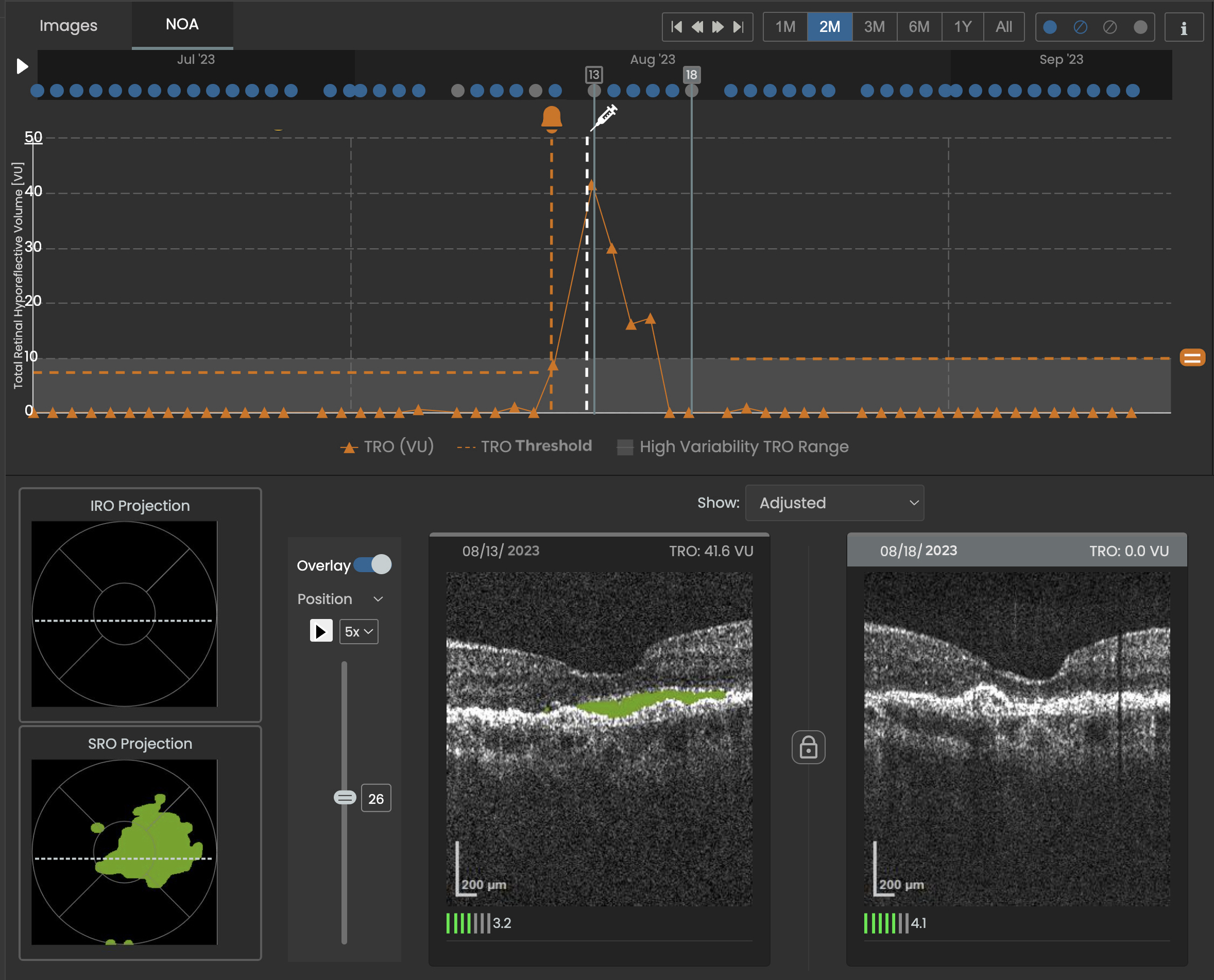A new study published in Ophthalmology Science concludes that artificial intelligence (AI) can reliably monitor disease activity in patients with wet age-related macular degeneration (AMD) using near-daily home optical coherence tomography (OCT) imaging.¹
The study evaluated data from 180 wet AMD patients, comparing Notal Vision's AI-powered Notal OCT Analyzer's (NOA) biomarker assessments against annotations by three expert graders. The results demonstrated a high degree of agreement, with NOA successfully detecting clinically meaningful changes. Sensitivity improved significantly when physicians applied personalized thresholds for retinal anatomy changes, increasing from approximately 90% to 99.1%—without raising the risk of false positives.
“Home OCT-based monitoring has been validated in large pivotal trials with over 500 patients, which is rare for medical imaging technology,” Dr. Theodore Leng, Director of Clinical and Translational Research and Ophthalmic Diagnostics at Stanford’s Byers Eye Institute, said in a Notal Vision news release announcing the study results. “Our study went a step further by showing that home OCT longitudinal data trajectories are clinically valuable and essential in helping retina specialists personalize disease management.”
Figure 1: SCANLY Home OCT longitudinal disease biomarker volume trajectory with notification and treatment indicators (top) and corresponding projection map of subretinal hypo-reflective (SRO) spaces and B-scans (bottom).

Previous pivotal trials established that Notal's SCANLY Home OCT imaging is equivalent to in-office OCT for visualizing key AMD biomarkers.² Those studies also validated NOA’s accuracy in identifying hypo-reflective spaces, a key disease marker, in a cross-sectional setting.³ The latest research is the first to confirm NOA’s effectiveness in longitudinal tracking within a home-based environment.
“This work is a major step forward in personalized AMD patient care,” said Kester Nahen, PhD, CEO of Notal Vision. “It shows that home imaging, powered by AI and guided by physicians, can reliably track disease activity and help doctors make informed patient management decisions.”
The findings will be presented by Dr. Leng at the Retina Society meeting in Chicago on September 12, 2025, marking an important milestone in the evolution of personalized ophthalmic care.
References
Leng, Theodore, et al. Longitudinal Validation of the Artificial Intelligence Algorithm in Home OCT for Age-Related Macular Degeneration. Report 3. Ophthalmology Science (2025): 100907.
Heier, Jeffrey S., et al. Pivotal Trial Validating Usability and Visualization Performance of Home OCT in Neovascular Age-related Macular Degeneration. Report 1. Ophthalmology Science, Volume 5, Issue 5, (2025): 100772. https://doi.org/10.1016/j.xops.2025.100772
Schneider, Eric W., et al. Pivotal Trial Toward Effectiveness of Self-administered OCT in Neovascular Age-related Macular Degeneration. Report 2—Artificial Intelligence Analytics. Ophthalmology Science 5.2 (2025): 100662.

